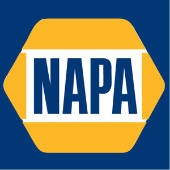-
Welcome to Auto Parts Forum
Whether you are a veteran automotive parts guru or just someone looking for some quick auto parts advice, register today and start a new topic in our forum. Registration is free and you can even sign up with social network platforms such as Facebook, X, and LinkedIn.
Are you Driving an Unsafe Car? What You Need to Know About Recalls
-
Similar Topics
-
By Counterman
On modern vehicles, overheating is a rare occurrence thanks to high-quality hoses, thermostats and better engine management. Unfortunately, the weak point is still the coolant. Whether it’s a 100,000-mile or 150,000-mile coolant, eventually it will break down and lose the ability to protect the components with which it comes into contact.
Coolant at 100,000 miles may look the same as coolant with zero miles, as the real difference between good and bad coolant can’t be seen with the naked eye; it is in the chemistry and based on mileage.
Coolant contains additives called buffers that keep it at a neutral pH but these buffers are meant to last forever. When these chemicals become depleted, the pH can’t be controlled. It rises dramatically in a short period of time the moment the buffers are fully depleted. This is why replacing the coolant at the recommended interval is critical.
Coolant has two specifications that can be used to justify replacement — the condition of the additive package and the freezing point.
The additive package is the secret sauce for a coolant. Its main function is to control corrosion. Other components of the additive help with heat transfer and cavitation reduction. Some additive packages use seal conditioners to extend the life of the gaskets and plastic carriers.
The freezing point is measured by the overall specific gravity of the coolant, which has a direct relationship to the coolant/water mixture. This test can help spot coolant that has been compromised by the owner topping off with water. This measurement works well on systems that do not have pressurized reservoirs.
The strength or freezing point of coolant can be measured with a simple hydrometer. This device uses a calibrated float or plastic balls (not as accurate) to show the specific gravity of the coolant. This, in turn, shows how much freezing/boiling protection the coolant offers. You must remember to compensate for temperature because the specific gravity (density) of the coolant is lower when the coolant is hot.
The more professional tool for this purpose is an optical refractometer because it is very accurate and automatically compensates for temperature. Be aware: these are not simple, inexpensive tools. A refractometer can cost up to $300 or more because of the precision optics in its lens. Ethylene glycol (EG) and polyethylene glycol (PG) antifreeze have slightly different densities, so you have to use a hydrometer or refractometer with the appropriate scale (or one with a dual scale) for accurate test results.
Color-coded chemical test strips that are dipped into the coolant can be used to quickly and easily reveal the condition of the coolant. These strips of coated capillary paper react to the presence of certain dissolved minerals in the coolant and change color to give a good, marginal or bad indication of the coolant’s pH condition. Some test strips also show the concentration of antifreeze in the coolant.
The added benefit of test strips is that the results can be shared with the owner by attaching the used strip to the inspection form.
But, mileage is the gold standard for any coolant replacement recommendation. Engineers and chemists spend a lot of time formulating the coolant to match the engine and interval.
If you are performing a water pump, heater core or hose repair, recommend a full coolant flush. Just topping off the coolant can lead to a mixed bag when measuring the pH and freezing point. Also, check the specific gravity before a repair. Many customers know how to top off their coolant with water that could dilute the coolant concentration.
Selling any fluid maintenance service is difficult these days. But, if you document and educate customers on the importance of coolant, it becomes more than just an “add on” service.
The post
link hidden, please login to view appeared first on link hidden, please login to view.
link hidden, please login to view -
By NAPA
The NAPA Network supplies adventure seekers and outdoor enthusiasts with the best RV cleaning products to keep their home away from home fresh and road ready. Whether you drive a large recreational vehicle with its own engine or tow-behind camper trailers, including Airstreams, pop-ups and fifth wheels, we have you covered. And of course, NAPAonline and NAPA Auto Parts stores carry
link hidden, please login to view. To start off, browse through products specifically designed for
link hidden, please login to view. Suck up any loose debris, dirt and pet hair using a high-powered link hidden, please login to view from popular brands like Craftsman, Armor All and Milwaukee. Keep in mind, even the best vehicle vacuum leaves behind crumbles wedged into crevices. To grab up as much as possible, utilize a link hidden, please login to view that can squeeze into hard-to-reach gaps. A cleaning gel features a non-stick, residue-free formula that leaves no mess behind, making it simple to clean your vehicle’s surfaces without the need for water or additional cleaning agents. link hidden, please login to viewIf you are shopping for the best products for RV interior spring cleaning, you can’t go wrong with
link hidden, please login to view. An RV is jam packed with surfaces that are coated with sticky handprints, food residue, grimy gear and pet hair. This multi-surface cleaner does not contain bleach, and is safe to use on vinyl and upholstery fabrics. And, after being applied, it will prevent mold and mildew from forming, which is great for families spending time at the beach or lake. Speaking of surfaces, an RV camper is filled with glass surfaces from appliances to bathroom fixtures to windows inside and out. Our NAPA experts highly recommend grabbing a bottle or two of the
link hidden, please login to view. If foam glass cleaner is your thing, go for the ammonia-free link hidden, please login to view that works on windows, mirrors and more. And finally, no bucket of RV cleaning products would be complete without air fresheners. Place
link hidden, please login to view underneath seats or inside cabinets and drawers. This vehicle deodorizer works on smoke, pet smells and food odors that are difficult to remove. For a quick refresh, stock up on a link hidden, please login to view from Chemical Guys. Don’t forget, participating NAPA Auto Parts stores offer a convenient
link hidden, please login to view option, so you can get back on the road in no time. And, NAPA offers even more savings with link hidden, please login to view. Earn 1 Point for every $1 you spend. Collect 100 Points, and automatically get $5 off your next order. Get Your RV Road Ready For Spring
At NAPA, we realize you bought an RV camper to spend more time outdoors, so let’s head outside. To start off your kit of RV exterior cleaning products, our experts recommend purchasing a solution to tackle splattered bugs, road tar and bird droppings. Because your recreational vehicle is massive, and you are likely to need to complete many washes in a season, go for the 32-ounce concentrate of
link hidden, please login to view by Sea Foam. This pre-soak eliminates the need for hard scrubbing, and is safe on vehicle paint, clear coats, gel coats, metal, glass, mirrors, outdoor carpet, plastic and vinyl. Follow up this pre-wash application with a true RV exterior cleaner, like a
link hidden, please login to view from Griot’s Garage. The ultra-slick formula offers a versatile application, including a traditional hand-applied bucket wash or with a foam sprayer. After doing all this intense spring cleaning, protect your hard work with the best RV wax that is safe on fiberglass. Our experts recommend, link hidden, please login to view, formulated specifically to remove oxidation from fiberglass or painted surfaces. The glossy shine provides unbeatable protection from harsh UV rays. Apply by hand or with an electric buffer. Need to stock up on the best RV roof cleaner? For RV roof cleaning, grab a bottle of Meguiar’s
link hidden, please login to view. It cleans, penetrates and rejuvenates nonpainted vinyl and rubber surfaces like new. Then, work your way down to any pull-out awnings. link hidden, please login to view should do the trick. It works on both vinyl and canvas materials. And finally, keep a can of link hidden, please login to view on hand. Of course, spring cleaning an RV is only one part of the long list of maintenance items for this rewarding passion. The NAPA Network carries the
link hidden, please login to view you need, from a link hidden, please login to view to link hidden, please login to view and link hidden, please login to view. And check out these detailed guides by the NAPA Experts on link hidden, please login to view and link hidden, please login to view. Photo courtesy of
link hidden, please login to view. The post
link hidden, please login to view appeared first on link hidden, please login to view.
link hidden, please login to view -
By NAPA
Is your car not shifting gears like it used to? An automatic transmission makes driving much less complicated than the manual gear (stick shift) alternative. But that convenience comes at the price of complexity. When an automatic transmission equipped car won’t shift gears, there could be several potential issues. These issues can range from a simple fix to needing a complete transmission rebuild. Below is technical expertise on “Why is my automatic car not shifting gears?”
Low Transmission Fluid link hidden, please login to view
Your automatic transmission relies on hydraulic fluid pressure to operate. The pump pulls
link hidden, please login to view from the transmission pan reservoir to actuate different components. If the transmission fluid level gets low enough, the pump will be unable to push fluid where it needs to go. Even worse, the pump will pull air into the system, which could lead to a lack of lubrication that damages parts. If you are lucky, your vehicle has a transmission fluid dipstick so you can easily check the fluid level according to the instructions in the owner’s manual. If your vehicle does not have a transmission fluid dipstick but is “
link hidden, please login to view”, that doesn’t prevent you from checking the fluid level. In most cases, the fluid can be checked via a fill plug, but the transmission has to be at a certain temperature and the vehicle must be level. This isn’t an easy task, so it might be best to have your local link hidden, please login to view do it for you. Faulty Shift Solenoid
We just mentioned how an automatic transmission relies on pressurized fluid to operate, but that fluid also needs to be routed to where it is needed. In a modern, electronically controlled automatic transmission, shift solenoids control the flow of transmission fluid. If the shift solenoid is faulty, then the fluid won’t be routed to the desired shift actuator. In older non-electronically controlled transmissions, shifting was controlled by shift valves, but the idea is the same. Shift solenoids can wear out or get stuck, leading to a no-shift condition. Fixing a faulty shift solenoid usually requires removing the transmission fluid pan to access the transmission valve body.
Low Transmission Fluid Pressure
You should be seeing a pattern of how important hydraulic fluid is to the operation of an automatic transmission. If the transmission fluid level is fine, there may still be a problem with the fluid pressure. Low fluid pressure can be caused by a worn out pump, clogged fluid passages or a clogged transmission fluid filter. A lack of shifting car gears due to low fluid pressure usually means it is time for a
link hidden, please login to view. If the problem is with the pump itself, then you are probably looking at a transmission rebuild. Bad Transmission Control Module
Most modern automatic transmissions have an electronic
link hidden, please login to view (TCM). The control module takes input from various sensors, and decides how the transmission should react. Depending on where the control module is mounted, it can lead a very hard life. Extreme temperatures, vibrations, leaking fluids and sometimes even how the circuit board is built can all lead to failures of microchips and other electronic components. If the check engine light is on while you are having shifting problems, the TCM may be the issue. Broken Shift Cable
Each time you drive, the shifter is moved at least twice, once for driving and again for park. That movement adds up over the years. While an automatic transmission doesn’t have the complicated shifting mechanism of a manual transmission, there is usually a physical connection between the shifter and the transmission. Modern
link hidden, please login to view usually have plastic components that can break down over time. There may also be bushings that get worn out. The shift cable itself is usually metal and rarely breaks, but the pieces connecting it to the transmission can possibly fail. Shift Lock Engaged
If the car is not shifting into gear from park, then the issue might be the gear shift interlock. Most modern vehicles have a lockout on the automatic gear shifter that requires the brake pedal to be pressed first. If the brake pedal isn’t pressed, the shifter won’t move. It is possible that the brake pedal sensor doesn’t read that the pedal is pressed, or a break in the shift interlock circuit interrupts the connection. The shift lock can be
link hidden, please login to view. Worn Out Bands
Just like how brake pads can wear out, so can the friction materials inside the transmission like the bands. Transmission bands hold certain components in place, while others are allowed to rotate. When this happens, the transmission won’t go into certain gears. Unfortunately worn out bands usually mean a complete transmission overhaul. Material from the worn out bands can make their way into sensitive fluid passages, clogging them or causing accelerated wear
Failed Throttle Sensor
This one may seem odd, but gauging how much throttle input the driver is giving makes a big difference in how the transmission acts. Whether the input is from a
link hidden, please login to view or a cable, if the driver pushes down the gas pedal, the transmission needs to change gears. But if that input isn’t received, the transmission has no idea what the driver wants to do. If the transmission doesn’t know the driver is hitting the gas, it might not shift into the next gear. Even worse, on some older transmissions, if the transmission isn’t linked correctly to the throttle input, severe damage can be done. If your transmission isn’t shifting like it used to, simply head to your local
link hidden, please login to view center. Our team of ASE-certified technicians have the expertise and training to diagnose your automatic transmission issues. As a bonus, your repair is covered by our free 24-Month/24,000-Mile link hidden, please login to view (parts and labor on qualifying repairs and services), which spans across the entire nationwide NAPA Network, including 17,000+ NAPA Auto Care center locations. Photos courtesy of
link hidden, please login to view. The post
link hidden, please login to view appeared first on link hidden, please login to view.
link hidden, please login to view 
-
By Counterman
Applications are being accepted for the Federated Car Care Scholarship program.
Interested students should complete and submit their applications at
link hidden, please login to view by March 31. The Federated Car Care scholarships are funded by Fisher Auto Parts in memory of Art Fisher, founder of Federated Auto Parts and the Federated Car Care program. Qualified candidates should specify “Federated” on their application when applying online.
Administered by the University of the Aftermarket Foundation (
link hidden, please login to view), the scholarships will be awarded to employees and children of active Federated Car Care Center members attending a two- or four-year accredited college, an ASE/NATEF-certified post-secondary automotive, heavy-duty or collision technician training program or any licensed and accredited vocational school. Students graduating from high school in 2024 and heading to any of these post-secondary programs also are eligible. “It is a privilege for us to once again provide scholarship opportunities to the children and employees of Car Care members, assisting them in furthering their education,” said Bo Fisher, chairman and CEO of Fisher Auto Parts. “The University of the Aftermarket Foundation’s AutomotiveScholarships.com website streamlines the application process. We urge all interested candidates to submit their applications by March 31 and look forward to awarding Federated Car Care scholarships to another group of deserving young men and women for the 2024-25 academic year.”
Federated is one of more than 30 other organizations awarding scholarships on
link hidden, please login to view. As an added benefit for students who apply at this site, each completed application will be considered by every scholarship where the candidate meets the qualifications. The post
link hidden, please login to view appeared first on link hidden, please login to view.
link hidden, please login to view
-




Recommended Posts
Join the conversation
You can post now and register later. If you have an account, sign in now to post with your account.
Note: Your post will require moderator approval before it will be visible.